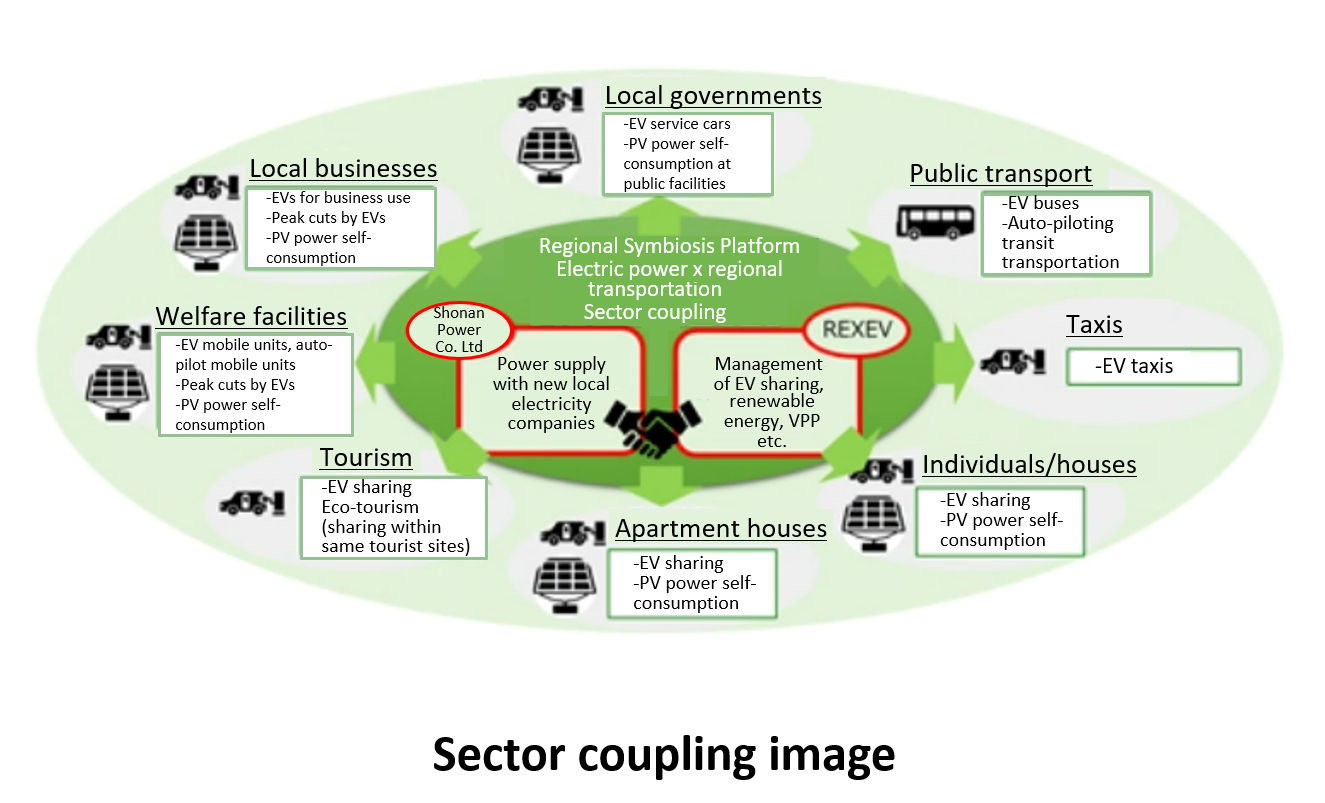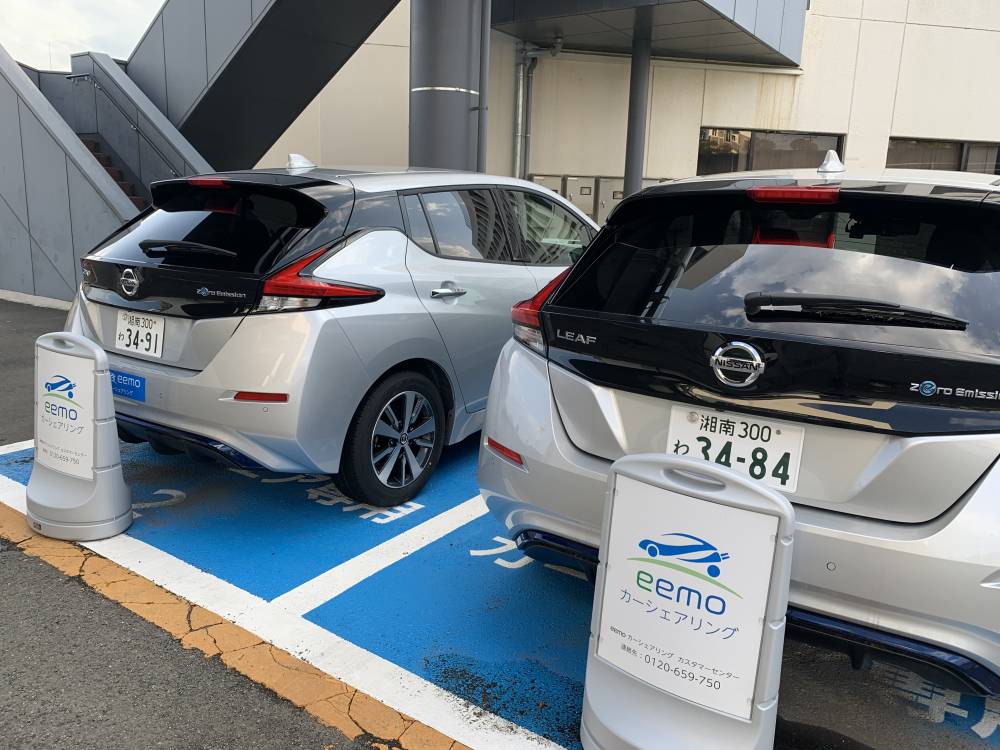Decarbonization
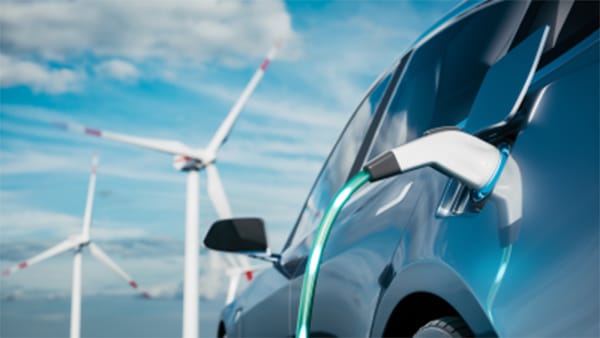
Climate change is an urgent issue commonly shared by all humanity. Developing countries are facing the challenge of achieving decarbonization while promoting economic development at the same time. In order to realize a decarbonized society, it is important to introduce the policies and measures for reducing greenhouse gas emissions and to deploy carbon neutral technologies in a unified manner.
This page provides the examples of policy, measures and technologies that contribute to decarbonization in the transport sector. (Last update 22 March 2023)
Policies, Measures and Technologies for Decarbonization
Policy Goals
With the Declaration of Carbon Neutrality by 2050 and commitment to the FY2030 goal to reduce GHG Emissions by 46% from the base year FY2013, the transportation sector aims to reduce CO2 emissions by 35% by promoting the policy plans and measures based on the Act on Promotion of Global Warming Countermeasures.
Breakdown of Japan‘s GHG emissions in the transportation sector
- The Japanese CO2 emissions related to energy were approximately 930 million [t-CO2] in the national greenhouse gas emissions in fiscal year 2020. The emissions from the transport sector were about 190 million [t-CO2], accounting for about 20% of the total energy-related CO2 emissions.
- In the transport sector, approximately 60% of the emissions are from passenger transport, and approximately 40% are from freight.
- According to the transportation modes, about 80% are from road transport including private cars and freight vehicles.
*From the National Institute for Environmental Studies (NIES). Greenhouse Gas Inventory Office
Energy-related CO2 Emissions by Sector
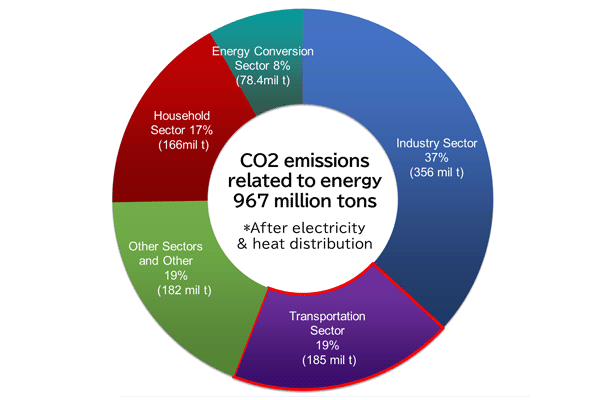
Breakdown of Energy-related CO2 Emissions in the Transport Sector
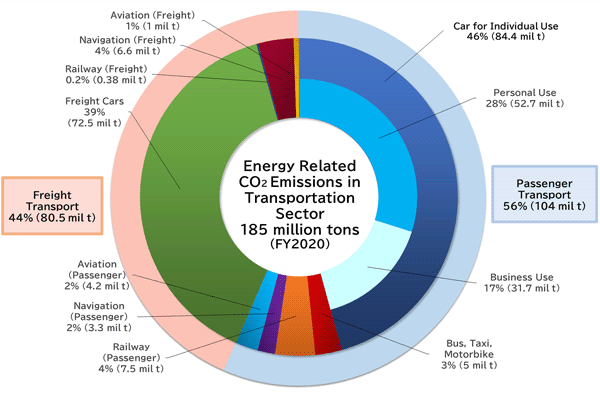
Measures
Measures for Automobiles
Support for introduction of next generation vehicles
Support for technology improvement and commercialization of next-generation vehicles
Promotion of Public Transportation
Promotion & development of LRT and BRT(*)
* LRT: Light Rail Transit, BRT: Bus Rapid Transit
Measures for railways, navigation and aviation
Promotion of decarbonized logistics
Interdisciplinary measures: promotion of the Joint Crediting Mechanism (JCM)
Interdisciplinary measures: transition to a decarbonized lifestyle (transportation sector)
Technologies
“Avoid” Technologies
“Shift” Technologies
“Improve” Technologies
Zero-emission vehicle
Electric vehicle (EV)/ EV charging station
Monitoring Technologies
Measures for Decarbonization
Measures for Automobiles
| Support for introduction of next generation vehicles |
|
|---|
| Tax incentives |
|
|---|
| Support for technology improvement and commercialization of next-generation vehicles |
|
|---|
| Infrastructure development support |
|
|---|
Efforts to increase resilience
Reinforcement and promotion of decarbonization and resilience
- Measures are implemented to support building Self-supporting and decentralized energy systems, which combine the local renewable energy and the electric vehicle (EV) etc. which can serve as mobile storage batteries, with the aim to simultaneously achieving renewable energy to become the main power supply and local resilience to be reinforced.
- In addition, the use of electric vehicle (EV) sharing services as well as the introduction of new regional mobility are promoted (green slow mobility, LRT/BRT, etc.), in an active combination with renewable energy, to support building the decarbonized regional transportation models.
※Green slow mobility is a small mobility service that uses electrified vehicles that can travel on public roads at speeds of less than 20 km/h.
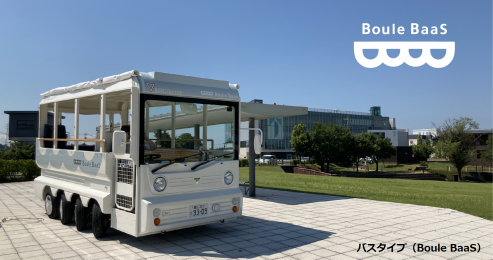
Green slow mobility pilot program "Boule BaaS" in Toyama City
Source:Toyama City(Japanese Only)
Promotion of Public Transportation
| Promotion & development of LRT and BRT |
|
|---|
Measures for the railways, navigation and aviation
| Decarbonization of railways |
|
|---|
| Decarbonization of navigation |
|
|---|
| Decarbonization of aviation |
|
|---|
Promotion of decarbonized logistics
| Streamlining truck transportation |
|
|---|
| Measures at ports and harbors |
|
|---|
| Electrification of Commercial Vehicles |
|
|---|
Interdisciplinary measures: promotion of the Joint Crediting Mechanism (JCM)
| The Joint Crediting Mechanism (JCM) |
|
|---|
Interdisciplinary measures: transition to a decarbonized lifestyle (transportation sector)
| Eco Driving |
Action Plan for Promoting Eco-DrivingThe liaison meeting for eco-driving dissemination by the four relevant ministries and agencies (*) conduct activities to raise public awareness and improve the environment for eco-driving. So far, “10 Tips for Eco Drive” has been formulated and promoted. * National Police Agency, Ministry of Economy, Trade and Industry, Ministry of Land, Infrastructure, Transport and Tourism, and Ministry of the Environment |
|---|
| Car-share |
|
|---|
Technologies for Decarbonization
“Avoid” Technologies
|
Transit oriented development (TOD) |
|
|---|
“Shift” Technologies
| LRT, BRT and new urban rail transit system |
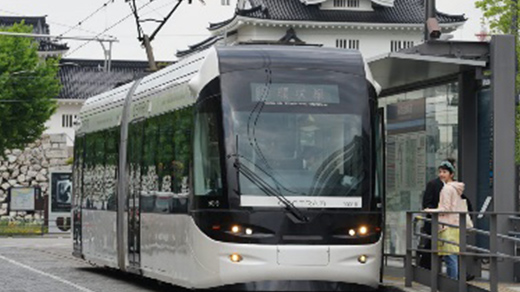
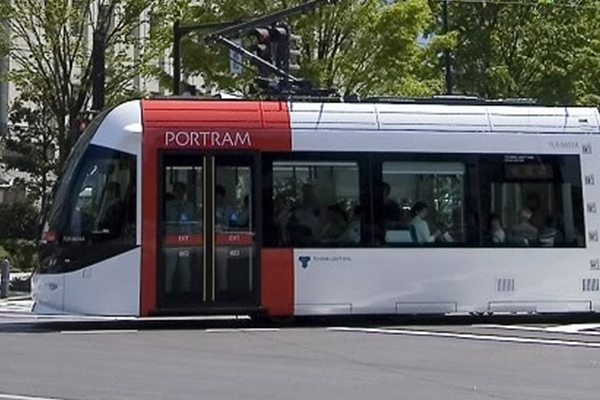
|
|---|
“Improve“ Technologies: Zero Emission Vehicles
| Electric vehicle (EV)/ EV charging station |

|
|---|
Efforts to increase resilience
Decarbonized local transportation systems
(Example of resilience reinforcement efforts)
- To build a decarbonized regional transportation system that is safe and resilient for everyone, Odawara City incorporates a service that rents EVs not only as a transportation means but also as a “local emergency power source” in the event of a disaster, by promoting a sector coupling between new local electricity using renewable energy and e-mobility services with storage batteries (EV car sharing service).
※Sector coupling is a concept for social infrastructure reform that will promote the decarbonization of society as a whole through linking the power sector with other energy consumption sectors such as transportation, industry, and heat.
| Fuel cell vehicle (FCV)/ FCV hydrogen station |

|
|---|
| Fuel cell forklift |
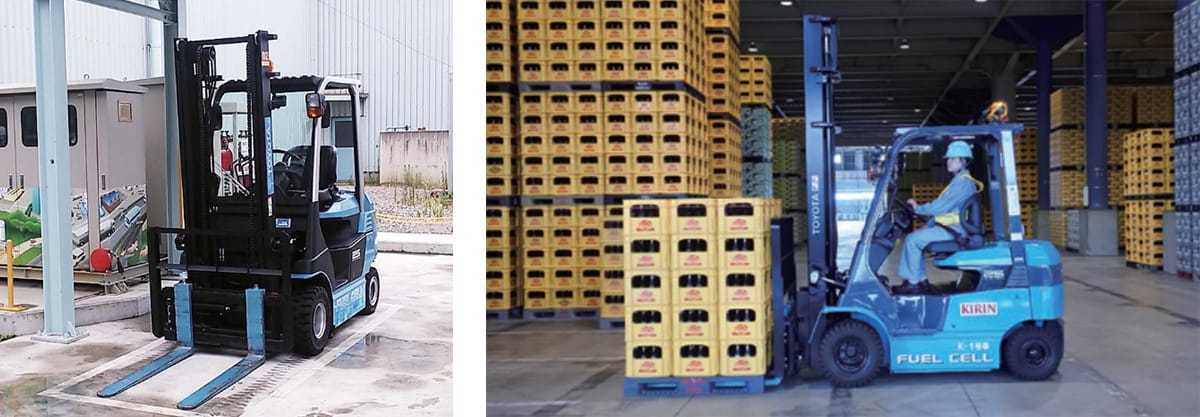
|
|---|
| Zero-carbon truck / bus |
Development of Fuel Cell Light Truck Vehicles (Technology Development and Demonstration Project to Strengthen CO2 Emission Reduction Measures in FY2019) 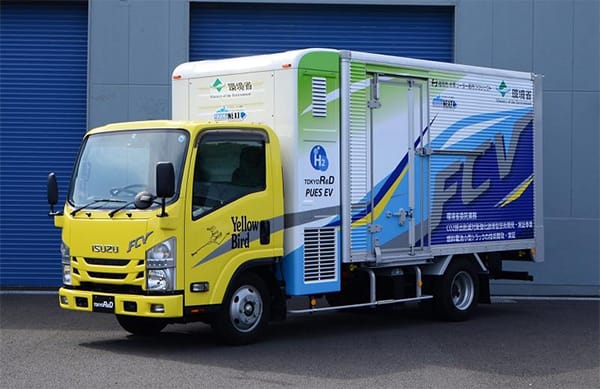
Fuel cell light truck under the commissioned project by Ministry of the Environment (2019) |
|---|
Monitoring technology
| Road traffic measuring equipment system |
|
|---|


